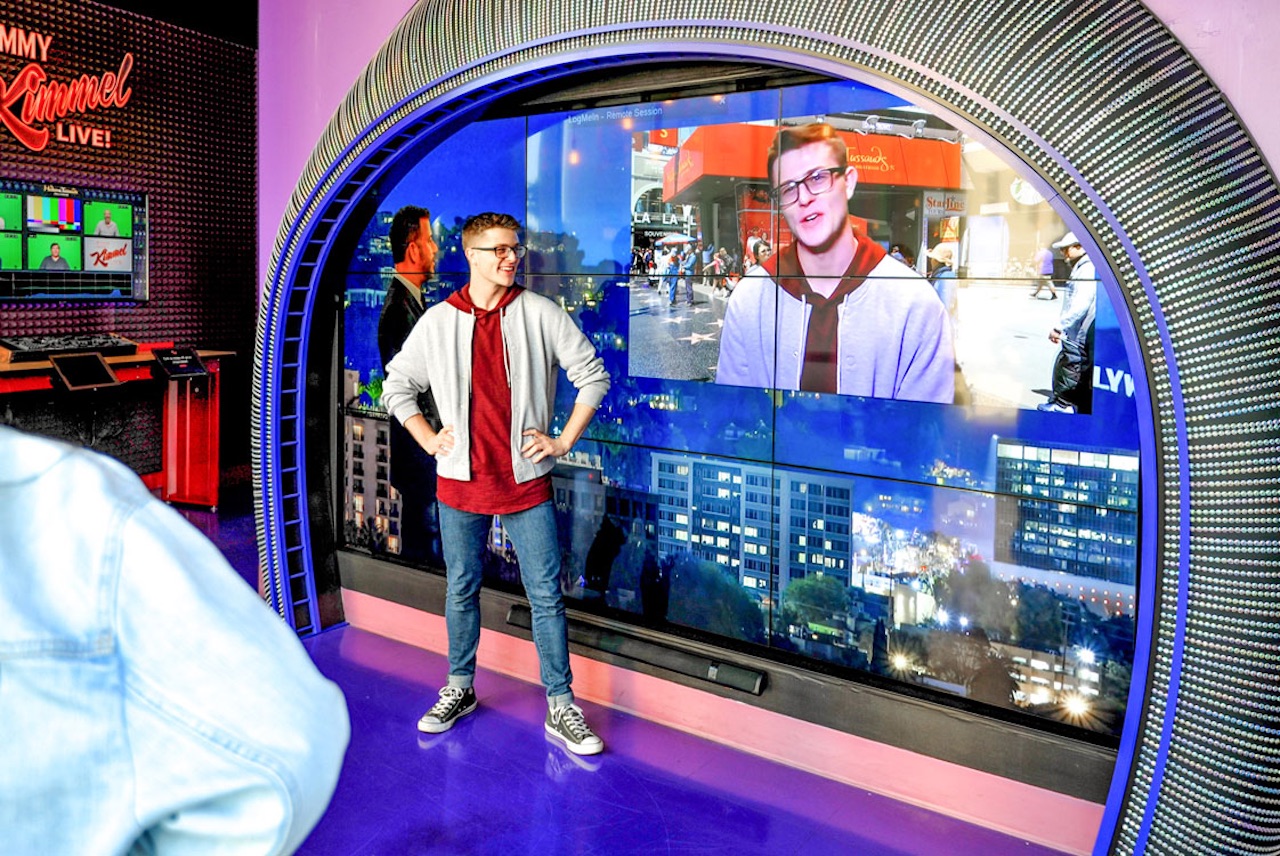Assembling the Digital Signage Puzzle
Putting the pieces together for innovative solutions.
It's no stretch to say digital signage technology has changed immensely over the past several years. The capabilities of software have grown more sophisticated, making systems simpler to install and use, and providing integrators ways to work more economically while providing additional value to end users. Additionally, the hardware and the systems that digital signage software relies on are continually improving, which, combined with today's software, sets a stage for innovation and the potential of increased returns on investment.

The Digital Signage Event gathered AV professionals to connect, collaborate, and discover the ever-expanding world of digital signage. Read our in-depth coverage of the day's panel discussions.
"Web technology is evolving faster than ever. Bandwidth is greater and servers are bigger. All the while, the costs for hardware are dropping," said Christopher Fox, director, customer experience at OpenEye Global. "In many ways there are fewer challenges for integrators than ever before."
[ Overcoming the Environmental and Placement Hurdles of Outdoor AV ]
These improvements have led to opportunities for integrators and marketers in this space, just as more and more people are looking to integrate digital signage systems into their business. Even though the past year has been challenging across all industries, demand for installing digital signage systems remains high, said Eric Lamb, vice president of publisher solutions at Vistar Media.

"We still had a lot of people coming to us, saying, 'Hey, we're putting up screens, we want to monetize them, can you help us do that?'" he said. "The signage operators didn't seem to be deterred. People are definitely still investing in networks, so that's encouraging."
When it comes to choosing what a system will look like, though, some people still have an outsized idea about what they want versus what they need. Much of the initial conversation with people interested in building a networked digital signage system, Lamb said, requires teasing a project's real needs out of the perceived ones.
[ Digital Signage Best Practices Guide ]
A daily selection of features, industry news, and analysis for AV/IT professionals. Sign up below.

"Expectations around what the effort will be don't necessarily match the reality," Lamb said. "A lot of times it's easier than clients think. A big thing is helping them understand what the opportunity is, in a realistic way. Sometimes that means we might turn people away, because when it's just two screens; maybe that's not the best network.
"For us, it's often an education problem," Lamb continued. "We try to help people see whether they don't necessarily need to switch out their entire platform to do what they want. It's about talking with the operator and making sure that we can help explain what the value is and how to best approach it."
Value is, of course, a big priority in digital signage. That means it's vital to calculate the cost of installation, ownership, and operation against the potential for advertising revenue, and again, a big part of that often comes down to perception versus reality.
"In talking to more and more signage operators, we're seeing that a lot of them are realizing they don't need to be a traditional media company to monetize their signage, and to do that in a way that's actually significant," Lamb said. "If they have a good location, or they have an audience that advertisers are interested in, they can incorporate ads in a way that's not too intrusive and build a media business without needing a giant team to do so."
A "good location" can be subjective, but it's often fairly obvious what works and what doesn't. Is it a highly trafficked spot that people pass by regularly? Even with all those boxes checked, the flipside still needs consideration—if you add signage to that spot, are people going to have a reason to look at it?

"If you're starting a network, whether you're monetizing it or not, the biggest thing you should be asking is what value you're going to be adding to the environment you're putting them in," Lamb said. "People assume they're going to be able to make a lot of advertising revenue by just putting a screen anywhere, but that's not the reality. Advertisers care about the audience—they care about the location and who they're reaching. If you're not able to articulate that, the advertising revenue is not going to come just because there's a screen someplace that people might see."
They'll also need to decide what they want these screens to actually do. At this point, people are familiar with digital signage from what they've encountered in various places, from billboards to menu boards to wayfinding in transit hubs, but a lot of the clients who are excited about installing their own system haven't thought about what goes into the ones they've seen. For instance, do they want a single piece of content up on the screen all day? Content on a loop? To alternate between ads and content? Full-motion video? Basically, they need to consider what experience they want to create, and they need to have a good idea of that from the outset.

"Deciding what content you're putting on screens shouldn't be an afterthought—that you say you'll get the hardware and the software, and then figure the content out later," Lamb said. "If you don't make those decisions first, you might make bad decisions on the hardware or software because you haven't thought through what it needs to do."
Another important piece of the puzzle is knowing who will be maintaining the content, and how regularly that content might be changing. For instance, does it become an ongoing part of the IT staff's role, does a marketing and communications department need to get involved, is it something that can be integrated into an administrator's workflow? Will the responsibility fall to a full-time person who's managing content part time, or will multiple people be involved in various ways over time?
"Knowing the answer to this gives an idea to the technical prowess of the day-to-day user," Fox said, which can inform training needs and levels of ongoing staff support that may need to be added to long-term planning.

As with just about any project, knowing what roles each participant holds and what their responsibilities are is the first step to a smooth and successful digital signage installation. Additionally, establishing those lines of communication and responsibility can also help provide important information about what the system can do.
[ Tech Roundup: The Latest Digital Signage Players ]
"This probably goes without saying, but all parties, from marketing to IT to installation staff, all need to be on the same page, with plenty of communication," Fox said. "Something that can be unveiled through this communication is the availability of network connectivity, which is the most crucial element for managing digital signage."
When choosing a platform to use in a digital signage application, one of the primary considerations is whether that platform requires a server that is located on the premises.
"This is usually a security issue, and when dealing with highly secured settings with dedicated IT staff like casinos, this is a requirement that may not be avoided," Fox noted.
Outside of high-level security needs in industries like healthcare and government, systems are likely to utilize software-as-a-service providers that have cloud-hosted options. Corporate and retail environments, for instance, have steadily increased acceptance of SaaS models as they've seen fewer concerns over both capability and security.

"Because of software-as-a-service, for providers who have cloud-hosted options security seems to be becoming less of a concern," Lamb said. "Again, working with experts, talking to an integrator, these are the kinds of things that they'll take off your plate, so it shouldn't be something you have to worry about."
Christopher Fox of OpenEye Global noted that the increased number of digital signage software platforms moving to the cloud provides expanded potential for innovation, where there are opportunities to use live data from internet-based sources through APIs and other methods.
"It seems that new platforms are popping up every month," Fox said. "These newcomers have the advantage of creating cross-platform web apps on the latest web technology without being held back by the legacy desktop publisher and on premise serve that the old guard was required to use."
Still, there is room for growth. If a system is designed to be scalable, the end user is better set up for a range of future needs. But the technology that can improve targeted advertising and experiences, which could help spur that growth, is one area to keep an eye on in the future.
[ Outdoor Fine Pitch LED Video Walls: 4 Trends on Display ]
"While the capabilities have now been around for years, I am looking forward to more face detection (not recognition) as a means of audience triggered content experience in the primetime," Fox said. "There have been privacy concerns, mainly because of face detection being confused with face recognition. I am hopeful people will be able to discern the difference and enjoy these enhancements to a more tailored and fun customer experience."
Eric Lamb of Vistar Media noted that the industry at large needs to buy into these capabilities. For widespread adoption to occur, every part in the chain needs to support the ideas. "The software is ready, the tech providers are there," he said. "But are the cameras, the sensors, all the sources of data that could be running on all these devices to make it something that is scalable, and not just limited to a specific network?"
Fox said the pieces are in place to develop creative solutions, and they'll only continue to improve. "The technology is smaller, lighter, better, less expensive, and most locations have Wi-Fi or ethernet internet connectivity. There are more third-party APIs giving near real-time information," he said. "This, paired with external sensors or cameras and some imagination, makes it possible to create more immersive experiences than ever."
